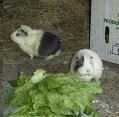 |
Bungala Ridge Permaculture Gardens REDUCE ... REUSE ... RECYCLE ... REPAIR ... RETURN ... REVEGETATE ... REPLENISH |
||||||||
|
|||||||||
|
|
What is Permaculture? Permaculture Ethics and Principles Permaculture works with a set of ethics that encourage responsible thought and action and emphasise the importance of relationships between all living and non-living things. The ethics of permaculture provide a sense of place and belonging. As a guidepost to action they promote community building in harmony with environmental concerns. Individualism and indifference gives way to caring, supportive behaviours that allow the opportunity for right livelihoods. Care of the Earth ...includes all living and non-living things - plants, animals, land, water and air. Care of People ...promotes self-reliance and community responsibility - access to resources necessary for existence. Setting Limits to Population & Consumption ...gives away surplus - contribution of surplus time, labor, money, information, and energy to achieve the aims of earth and people care. Permaculture acknowledges a basic life ethic, which recognizes the intrinsic worth of every living thing. A tree has value in itself, even if it presents no commercial value to humans. That the tree is alive and functioning is worthwhile. It is doing its part in nature: recycling litter, producing oxygen, sequestering carbon dioxide, sheltering animals, building soils, and so on. The principles of permaculture design provide a set of universally applicable guidelines which can be used in designing sustainable habitats. Distilled from multiple disciplines - ecology, energy conservation, landscape design, and environmental science - these principles are inherent in any permaculture design, in any climate, and at any scale. Return to What is Permaculture
|
Hot Links!
This site is sponsored by Permaculture Principles
|
|||||||
|
|
|
|
|||||||




